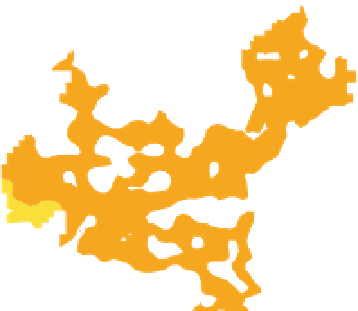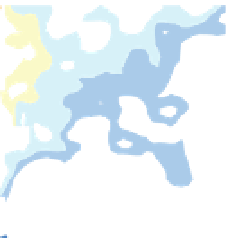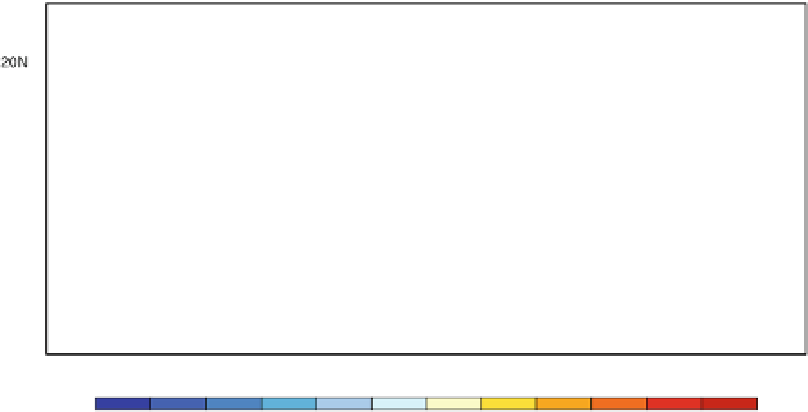Geoscience Reference
In-Depth Information
in the thickness of MLD in the western Pacific Ocean play an important role. The
amplitude of the SST variations is large on the intra-seasonal time scale where the MLD is
shallow. SST variations are mainly in response to the varying net heat flux at the ocean
surface—Sengupta et al. (
2001
). That, in the intra-seasonal time scale, convection moves
to oceanic areas of higher SST in the tropics is an accepted hypothesis—see Hendon
(
2005
). Purely atmospheric mechanisms (e.g., MJO) have been proposed to explain the
lengthening of the AB cycle in El Ni˜ o years—e.g., Joseph et al. (
2009
). Indian monsoon
droughts are known to be associated with El Ni ˜ os, and it is surmised that it is so mainly
because of the long AB cycles associated with El Ni ˜ o.
4 Inter-annual and Decadal Variability of Monsoon
India gets three fourths of its annual rainfall from its summer monsoon taken as the period
01 June to 30 September. According to the India Meteorological Department, if the Indian
Summer Monsoon Rainfall (ISMR) goes below 10 % (about one standard deviation) of its
long-term average, it is declared as a drought year. ISMR had very little long-term trend
during the period of good rainfall measurements (1871 to date), but it had a prominent
decadal variability (see Fig.
9
). During the 3 decade long DRY epochs 1901-1930 and
1961-1990, the monsoon scenario was bad, India having droughts on average once in
about 3 years. In contrast during the 3 decade long WET epochs 1871-1900 and
1931-1960, the frequency of droughts had been on average once in 10-20 years only.
Thus, during the 120 years 1871-1990, we had regular 30-year epochs alternating between
DRY and WET. Using the available network having a smaller number raingauge stations
over India, it was found that 1841-1870 was a DRY epoch. This regular epochal pattern
has undergone a change in recent years. The period 1991-2020 was expected to be a WET
epoch. Although the decade 1991-2000 had no monsoon droughts, during the next decade
beginning in 2001 we had three droughts (in 2002, 2004 and 2009).
Fig. 10 Mean HadISST anomaly of September to November after five severe drought monsoons of 1965,
1972, 1979, 1982 and 1987





















































































































































































































































































































